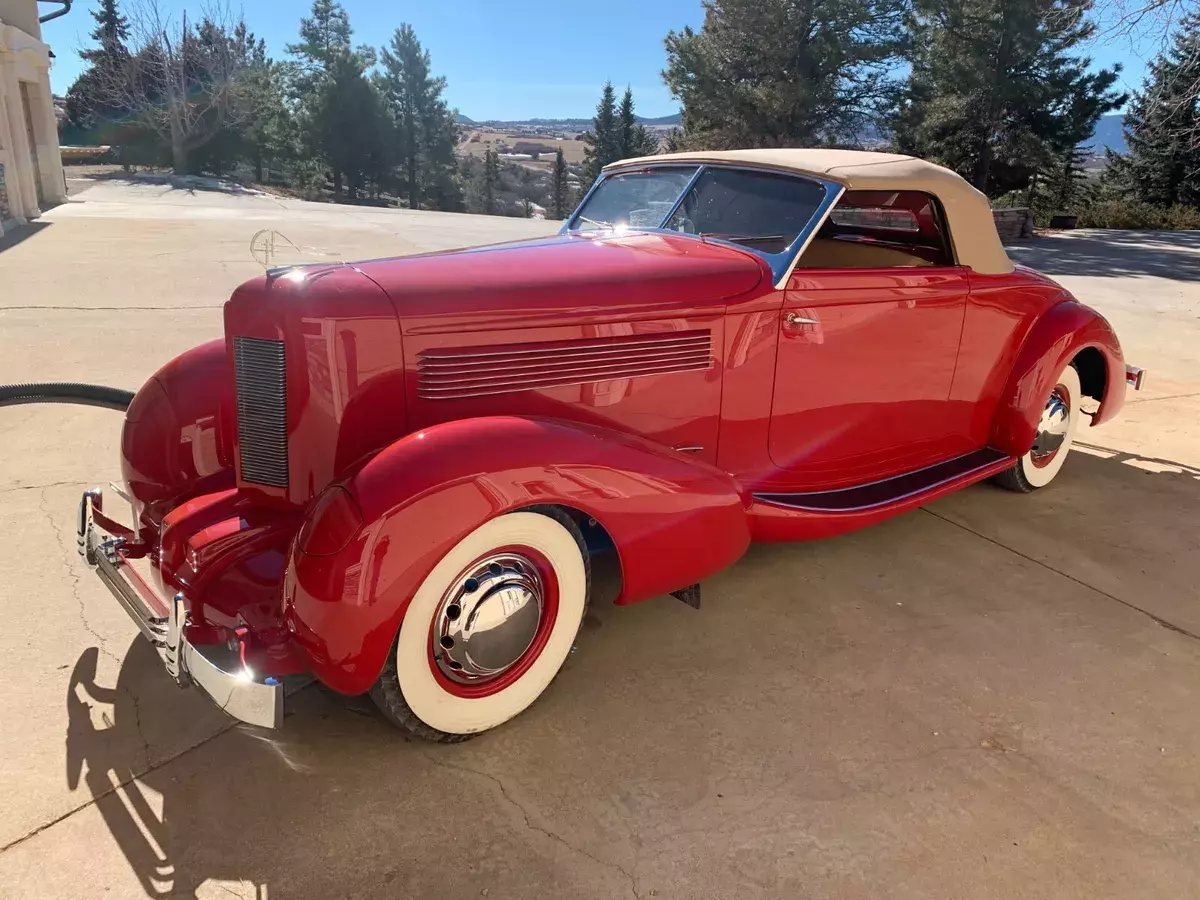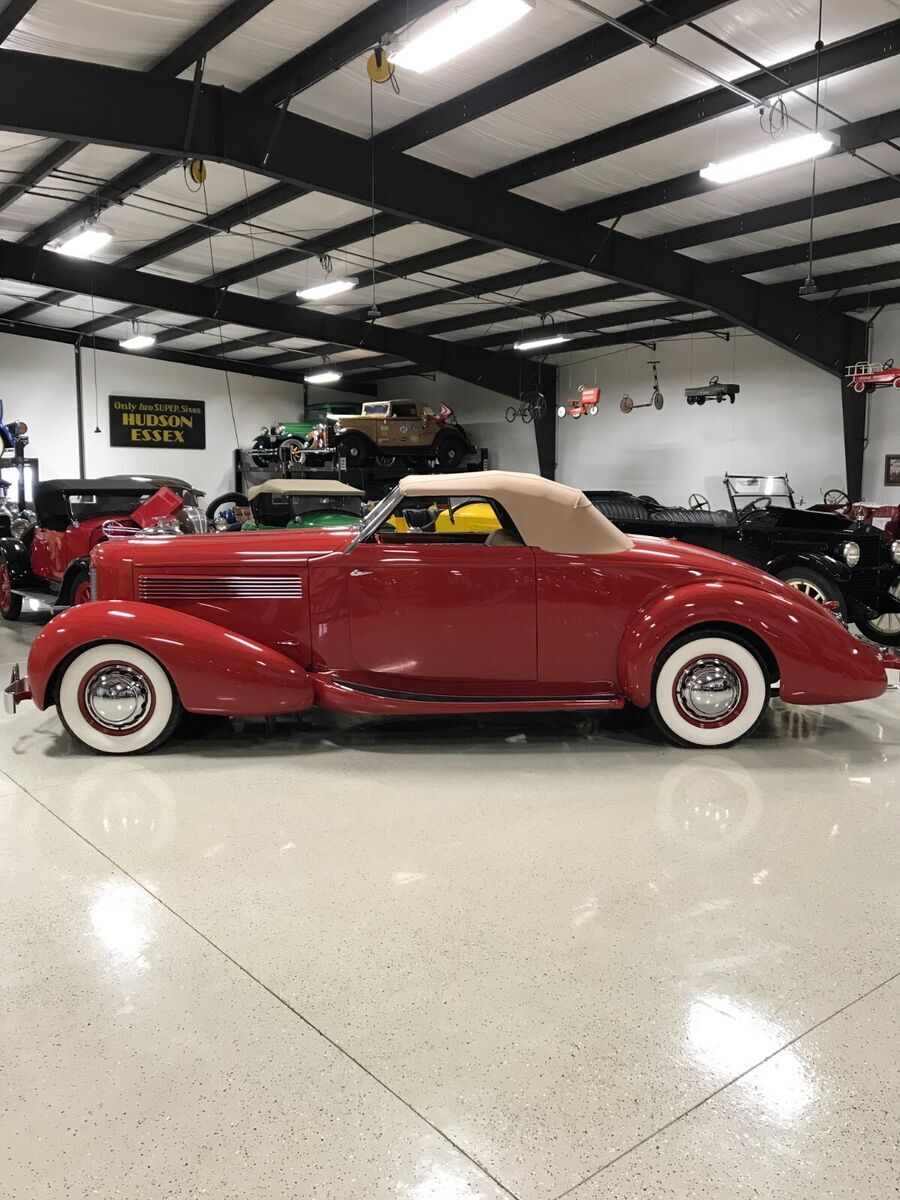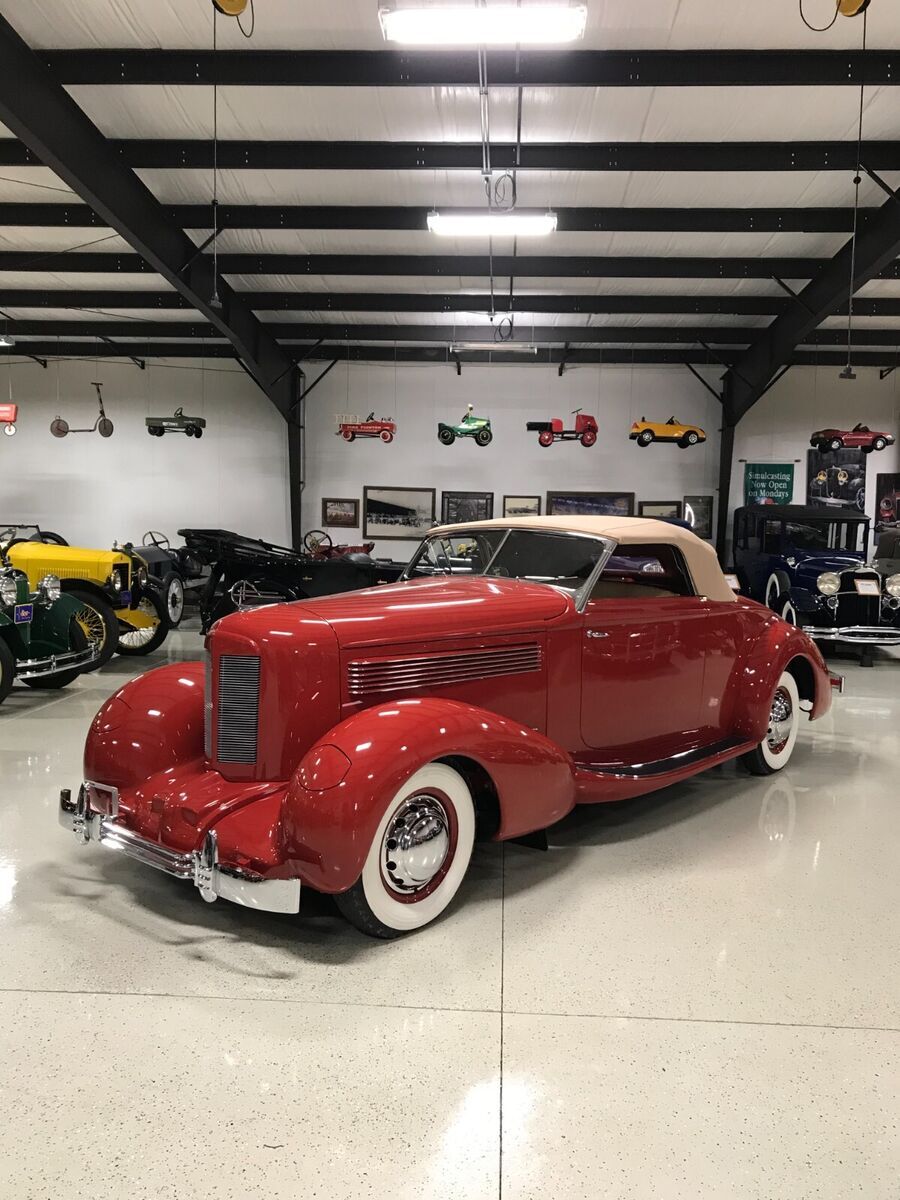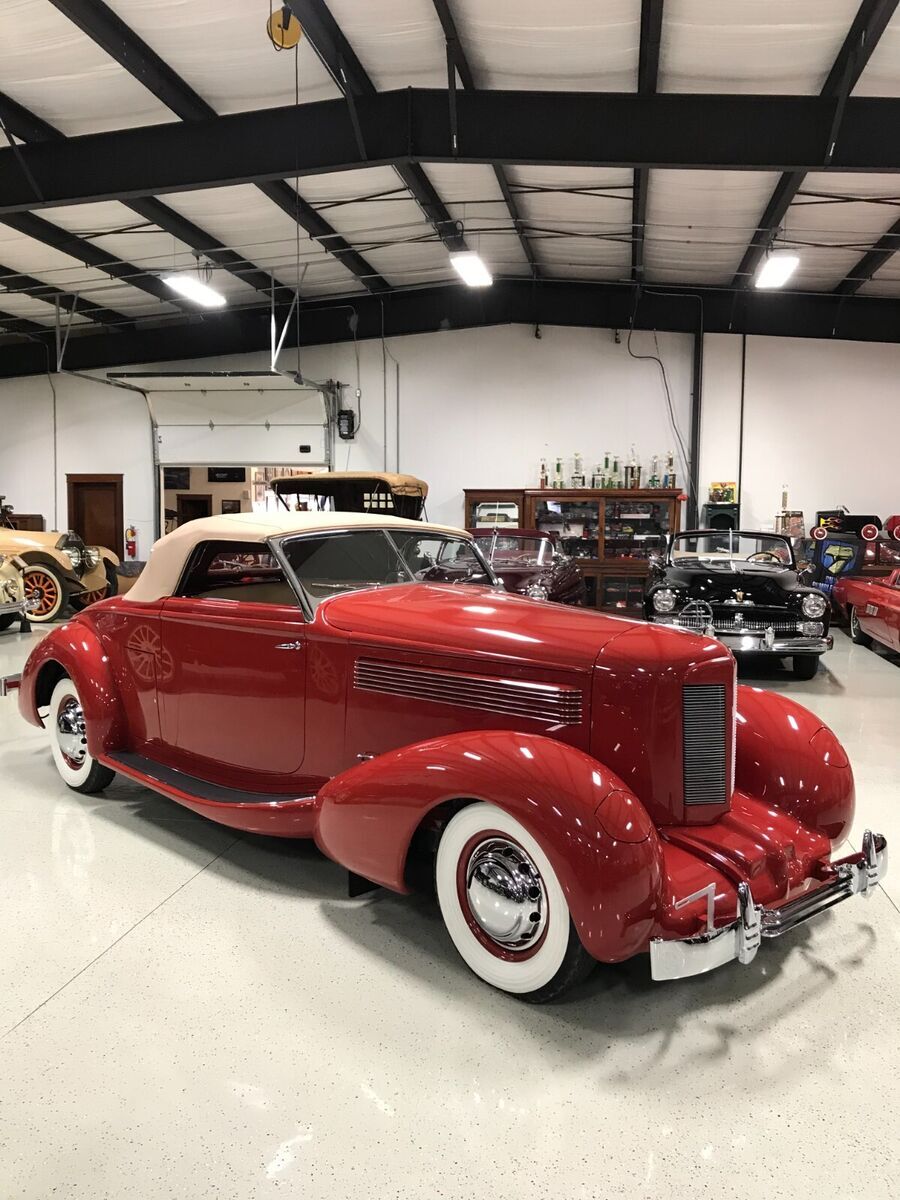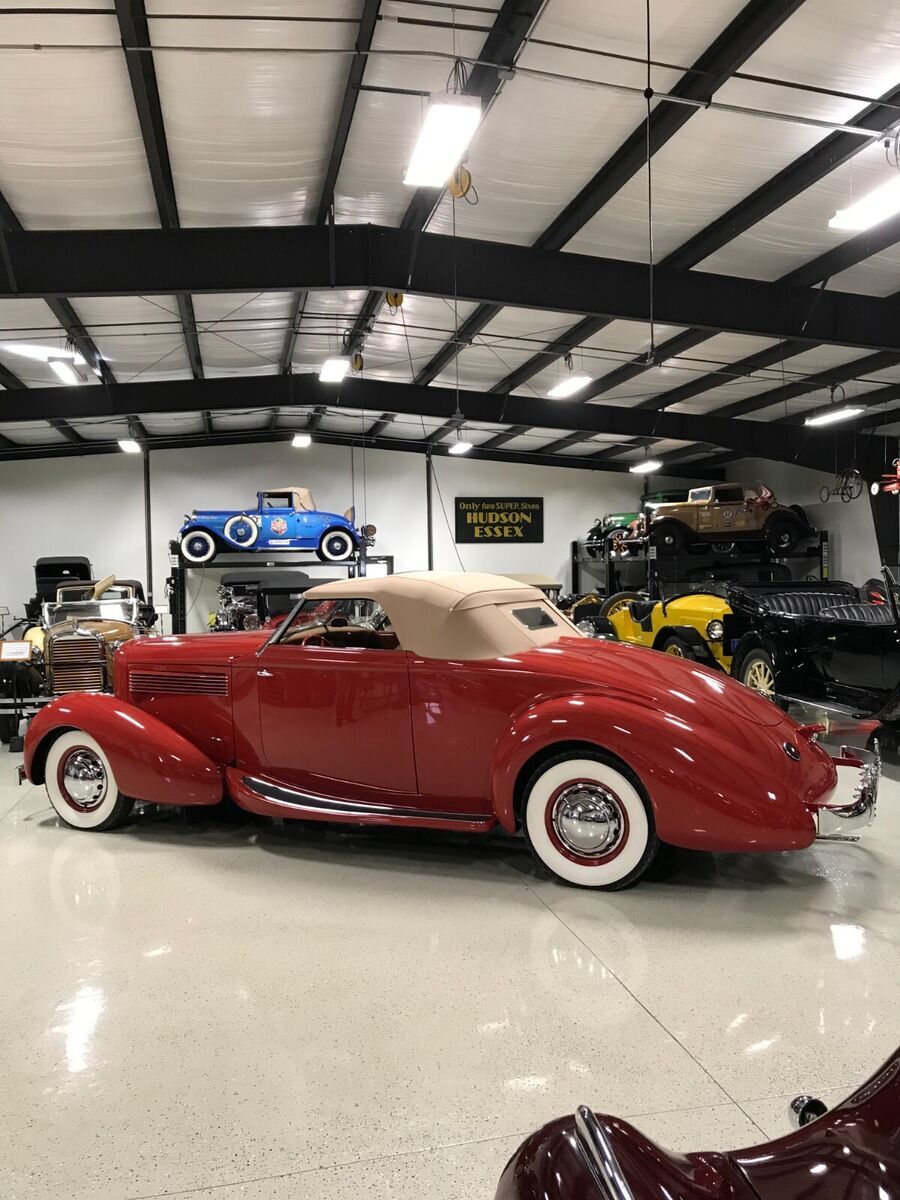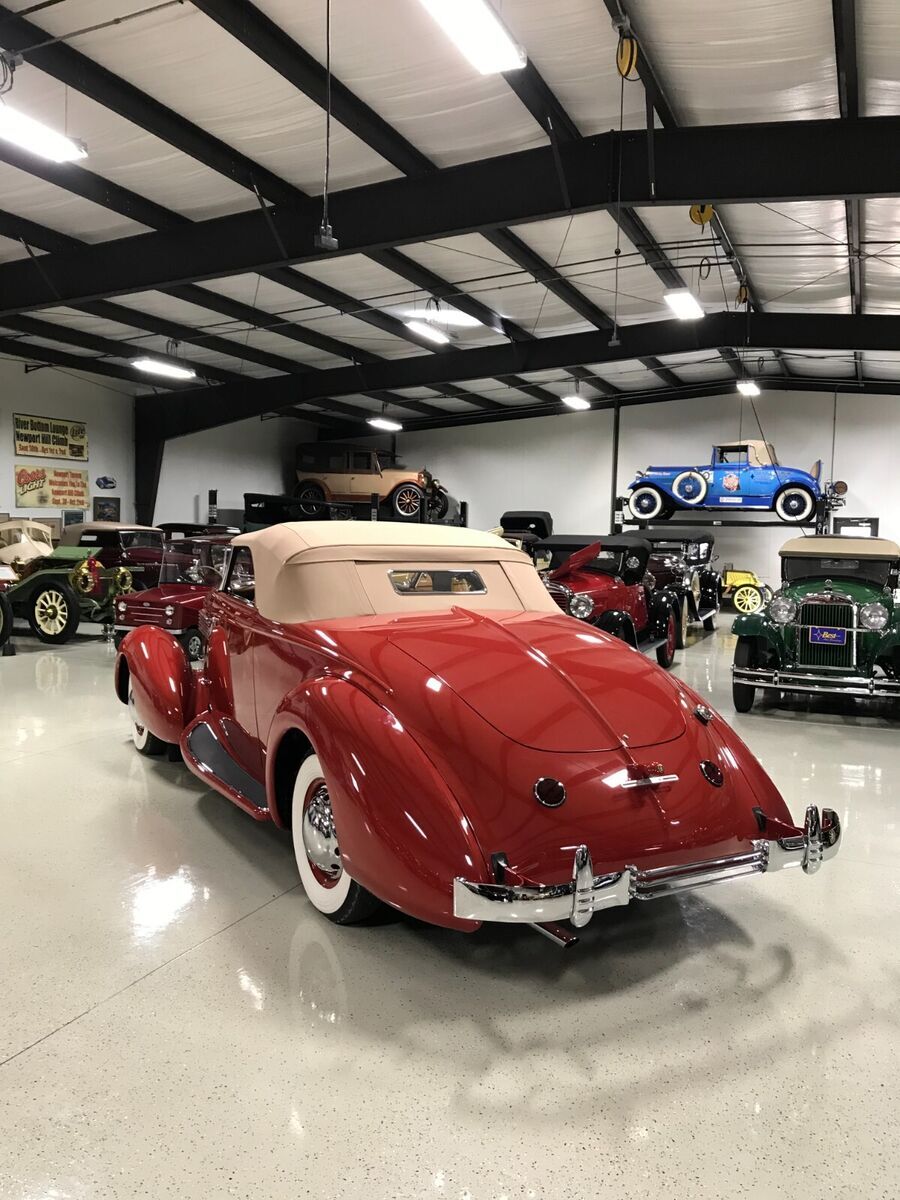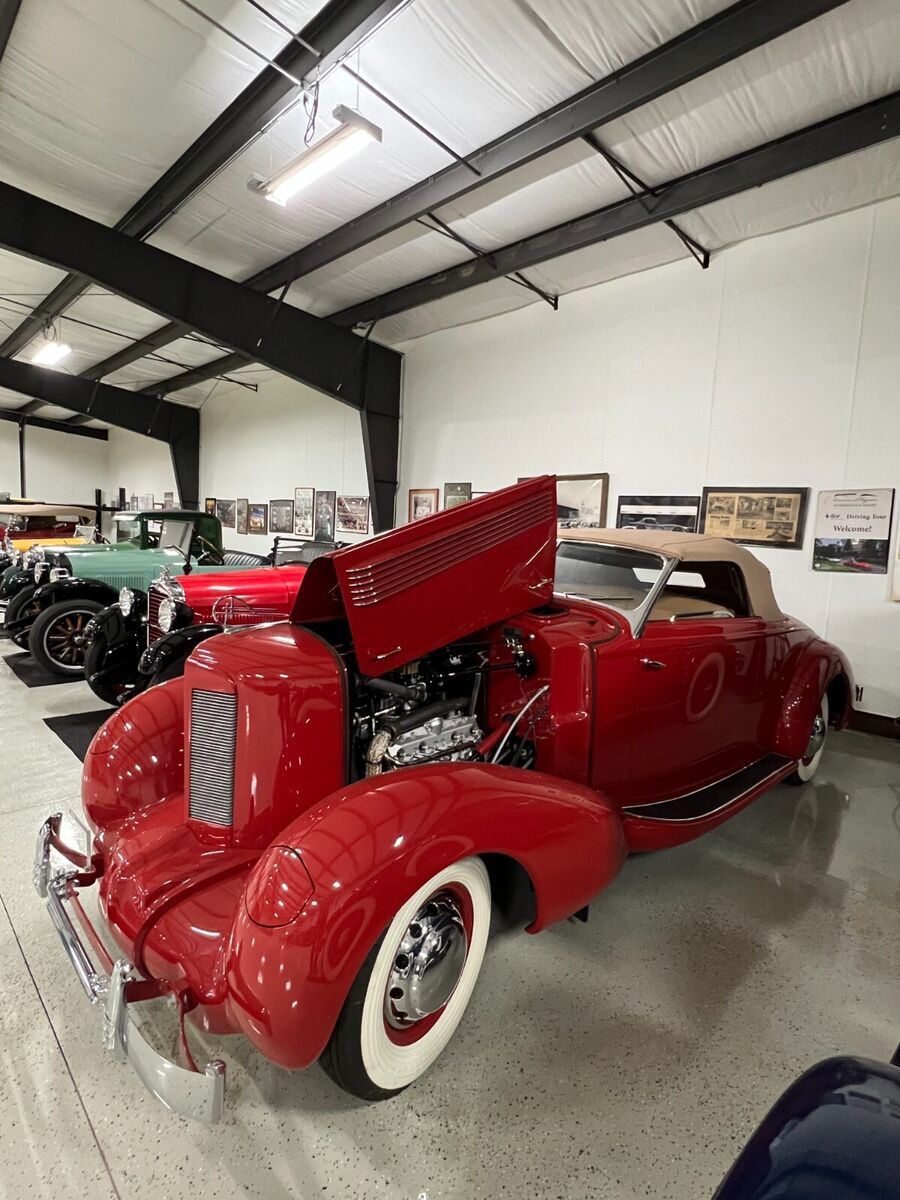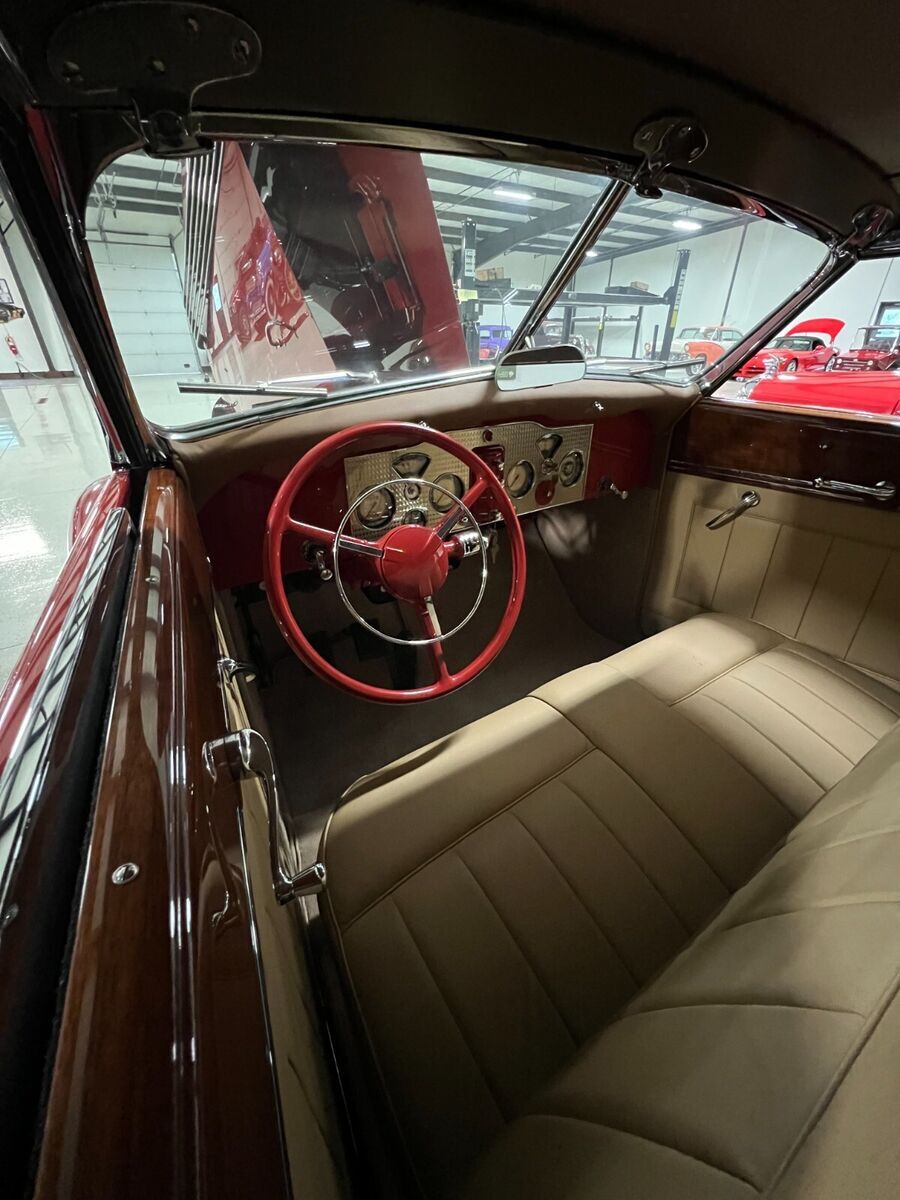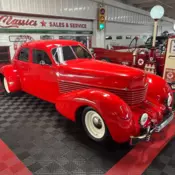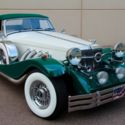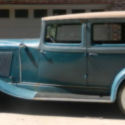1936 Cord Experimental LeBaron Cabriolet - Auburn, Cord, Duesenberg Prototype
| Make: | Cord |
| Model: | Experimental LeBaron - Duesenberg Prototype |
| Type: | Convertible |
| Doors: | 2 |
| Year: | 1936 |
| Mileage: | 48 |
| VIN: | OS2-1255 |
| Color: | Red |
| Engine: | V8 - Lycoming Supercharged |
| Fuel: | Gasoline |
| Transmission: | Manual |
| Interior color: | Tan |
| Drive side: | Left-Hand Drive |
| Vehicle Title: | Clean |
1936 Cord Experimental LeBaron - Duesenberg Prototype Additional Info:
Look closely at this vehicle!
This isNOT an 810 or 812 Cord. Rather, this is the 1936 Cord, Experimental LeBaron-Cabriolet (Convertible Coupe) – a Prototype originally intended to be part of the 1938 Small Duesenberg lineup – otherwise known as the “Baby Duesenberg”. This is the ONE AND ONLYCabriolet, an original Baby Duesenberg Prototype.
Many have heard stories and rumors of the existence of this car, and old pictures of the car in its unrestored condition have circulated among enthusiasts and on the Internet for many years. However, only a select few individuals have ever had the opportunity to actually see or drive this vehicle – even fewer have had that opportunity since the professional restoration was completed in 2021. This car is currently part of a private collection. It has never been taken to or entered in any car show, judged for points, certified by the ACD Club, or otherwise revealed to the general public since restoration. The buyer of this car will have the opportunity to take those actions and claim any and all of those awards and accolades as his or her own.
This vehicle started life in 1934 as the E300, Plan 12, Experimental Duesenberg Project. Gordon Buehrig and J. Herbert Newport Jr., created the initial front-end designs, and Herbert T. Snow worked on the initial drivetrain designs. The Auburn Automobile Co. (parent company of Duesenberg at the time) outsourced the body designs to LeBaron Body Co. where Philip O. Wright created five (5) different body styles for the E300 Duesenberg Project: a Limousine; a Berline Sedan; a Fastback Sedan; a Phaeton Sedan; and a Cabriolet.
By the time LeBaron delivered the five (5) completed Duesenberg Prototype bodies (one of each), Buehrig and Snow had already left Auburn, and the Auburn company was in no financial position to continue work on the new Duesenberg Prototypes. The E300 Duesenberg Project was placed on hold, and the LeBaron bodies were placed in storage.
In 1936, Errett L. Cord, owner of the Auburn, Cord, and Duesenberg companies, was touring the Connersville facility. He saw the unused LeBaron bodies, and he instructed Roy Falkner, President of Auburn, and Alex Tremulis, Chief Stylist and Designer, to finish the project using the best features of the Auburns and Cords. Falkner then resurrected the E300 Duesenberg Project, but with a few significant changes.
To save development time and costs, the LeBaron body would be placed onto the rear 2/3 section of an Auburn frame, and that section would then be welded to a Cord 812 front-wheel-drive sub-frame and drive train.Lloyd H. “Slim” Davidson, Head of Central Manufacturing’s Experimental Garage, fabricated and assembled the chassis. The vehicle was then fitted with a Supercharged Lycoming V8 engine.
Tremulis was put in charge of redesigning the car’s front end from the cowl forward. This required new grill, hood and side panel designs. Some say the radiator shell and grill was intentionally designed to mimic the nose of the Duesenberg cars that won the Indianapolis 500. Cord front fenders (including hidden headlights), hubcaps, bumpers, and transaxle covers were used. Cord rear fenders were reworked and elongated to fit the LeBaron body, and running boards were added to give the Baby Duesenberg Prototype a more upscale, Duesenberg look. The instrument cluster on the dash was made functionally similar to but arranged differently from the instrument cluster on an 810 or 812 Cord. An Auburn Automobile Co. name plate contained the Serial No. and Engine No. All of these custom elements were designed and completed at the factory while the E300 Duesenberg Prototype was taking shape.
Tremulis also designed a new, artistic hood ornament. Some believe the hood ornament looks like a dollar sign, or a hash tag symbol; others see it as a stylistic rendering of the letters E L C when viewed from the driver’s side – perhaps a small gesture of respect or a “nod” to E. L. Cord for resurrecting the E300Duesenberg Project. Ultimately, interpretation of such artwork lies with the viewer.
None of the E300 Experimental Duesenberg Prototypes were ever sold to the public, and only the Berline and the Cabriolet are known to still exist. E. L. Cord took possession of the Berline in 1936. Lucius B. Manning, then President of Cord Corp., took possession of the Cabriolet in 1937 when he placed the Cord Corp. in receivership and ceased all operations of Auburn, Cord and Duesenberg.
Because the final configuration of the E300 Duesenberg Prototype cars shared many components with the Cord 810/812’s some automotive historians designated these Prototypes as Cord LeBaron, rather than Duesenberg. Others firmly believe the Prototypes should be considered Duesenberg because the whole purpose of the E300 Project was to create a new, smaller, Baby Duesenberg.
Harrah’s Automobile Collection of Reno, NV acquired the Prototype Berline in 1962, and E. L. Cord himself assisted Harrah’s in restoring the Prototype to its original condition. After restoration was complete, Harrah’s designated their Prototype as a 1936 Cord Experimental LeBaron. Because Harrah’s considers its Prototype to be a 1936 Cord, Experimental LeBaron-Berline, the owner of the Cabriolet followed suit and recently obtained an Indiana Title for this Prototype as a 1936 Cord, Experimental LeBaron-Cabriolet.
The current owners of the Cabriolet purchased this Baby Duesenberg Prototype from John Baeke in July of 2013. They then had it professionally restored to its original body and drive train configuration, exterior color, and interior designs to be exactly like it was when it left the Connersville facility in 1937.During the restoration process, the paint color was carefully researched to ensure that it matched the original color of the car when it left the factory. Based on clear evidence of the paint color observed from underneath the LeBaron body tag, hinges, and other parts covering and preserving the original paint, it is believed the car left the factory in the same dark red color which you see now. The interior leather, carpet, and finishes are also in original color and form. The restoration was completed in February of 2021, and numerous before and after photographs were taken during the research and restoration process.All photographs and historical, research files will go with the car.
The Berline is currently in the National Automobile Museum (the Harrah’s Collection) in Reno, NV. It is unlikely that car will ever be available for purchase by a private collector. However, you now have the rare chance to purchase this one-of-a-kind vehicle – the infamous Baby Duesenberg Prototype Cabriolet- and to make it the centerpiece of your private collection. Whether you call it an Auburn, a Cord, a Duesenberg, a Cord LeBaron, or an Au-Du-Cord for that matter, this unique Duesenberg Prototype is sure to garner attention, gather a crowd, and be the star of the show in any collection.
While we have done our best to present this vehicle as honestly and accurately as possible, we cannot guaranty the accuracy of all information contained herein. Accordingly, the Buyer is encouraged to do his or her own research to ensure complete satisfaction with the car and its significant place in history. In that regard, additional historical information regarding the Cord LeBaron - Prototype Baby Duesenberg - can be found in Ron Irwin’s ACD Registry; publications by Josh Malks; ACD Newsletters (1968, 1970, 1972, 1982 & perhaps others); “1936Cord Le Baron will be at reunion,” published in The Auburn Evening Star, Copyright 1970; “The Auburn Story, the classics come home,” published in The Auburn Evening Star, Copyright 1972; “The Reunion,” The Official Event Book for the 2009 National Meet of The Auburn Cord Duesenberg Club, Inc.; and at the following website for “Coachbuilt,” discussing the life and career of Alex S. Tremulis, http://www.coachbuilt.com/des/t/tremulis/tremulis.htm. Other publications and additional information may be found with additional research.
This vehicle is being sold “AS-IS, WHERE IS.”Seller is not providing any express or implied warranties to Buyer. Seller expressly disclaims any implied warranties of merchantability or of fitness for a particular purpose. No statements in Seller’s posting or other advertising whether in print, online, or verbal shall be deemed to create a representation or warranty of any kind.
Payment must be made by wire transfer only. Seller will not permit the vehicle to leave the premises until payment in full has cleared with Seller’s bank. Buyer is responsible for any and all foreign, federal, local, state, county, and/or city taxes and fees, for title and registration fees, for pick up, shipping or other transportation costs, and for any other fees or costs that may apply. Buyer is also solely responsible for picking up the vehicle, and/or for making any shipping or other transportation arrangements for the vehicle.
Please contact Seller’s agent via email at ksermersheim@besthf.com for additional information, to make an appointment to inspect the vehicle, and/or to make an offer. Reasonable offers will be considered. However, serious inquiries only please.
